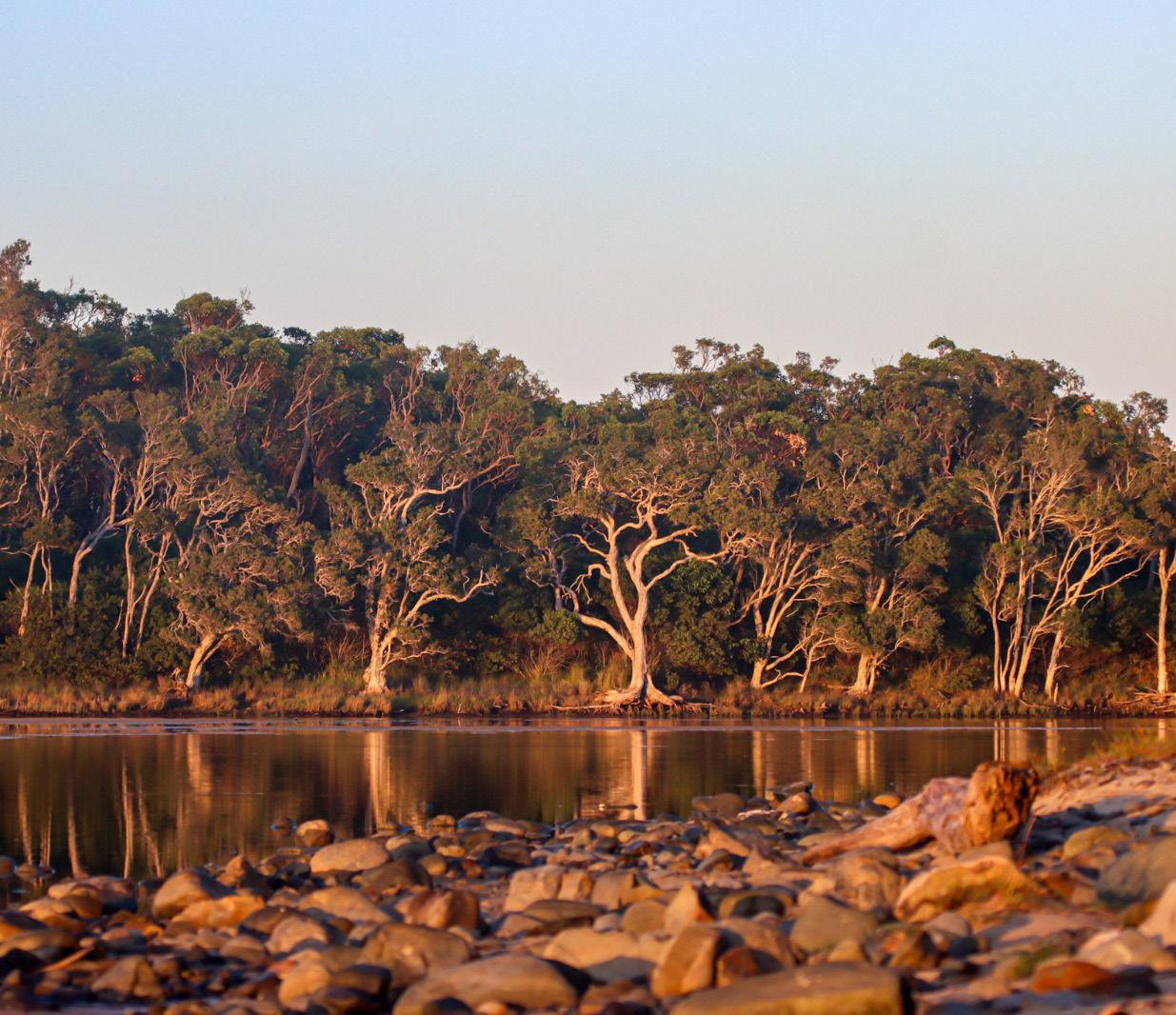
Summary of issues


Summary of issues
Coastal Management Program
Have your say to help protect our lakes, lagoons and river systems from Wallabi Point to Karuah River.

Find out the main issues our estuaries are facing and what we are already doing to manage them. Tell us what you think about the management options.
We want your input on how we can manage our estuaries into the future.

Scan the QR code and complete the online survey. Feedback closes 4.30pm Thursday 22 May 2025.
There is a range of information we use to assess the management options. Your feedback will help us to prioritise options for the program. You can help us identify locations for actions. We will ask you for final feedback on the draft program. It will then be presented to Councillors for endorsement.
The NSW Coastal Management Act 2016 requires Councils to have Coastal Management Programs. The program aims to maintain social, cultural, environmental and economic values of our estuaries.
Climate change
Limited community stewardship
Loss of Aboriginal cultural heritage
Agricultural impacts
Aquaculture and commercial fishing
Threats to biodiversity and habitat
Impacts to human health
Changes to estuary entrances
Loss of coastal wetlands
Flooding and inundation
Recreational impacts
Land use planning
Erosion and sediment control
Stormwater and litter
Increased greenhouse gases in the atmosphere are the cause of climate change. Climate change is largely caused by the activities of humans. Climate change is affecting our estuaries.
• Rising sea levels cause habitat creep and loss of land.
• Drying of catchments and increased intensity of rainfall impacts erosion, habitats and ecosystems.
• Rising water temperatures harm marine life.
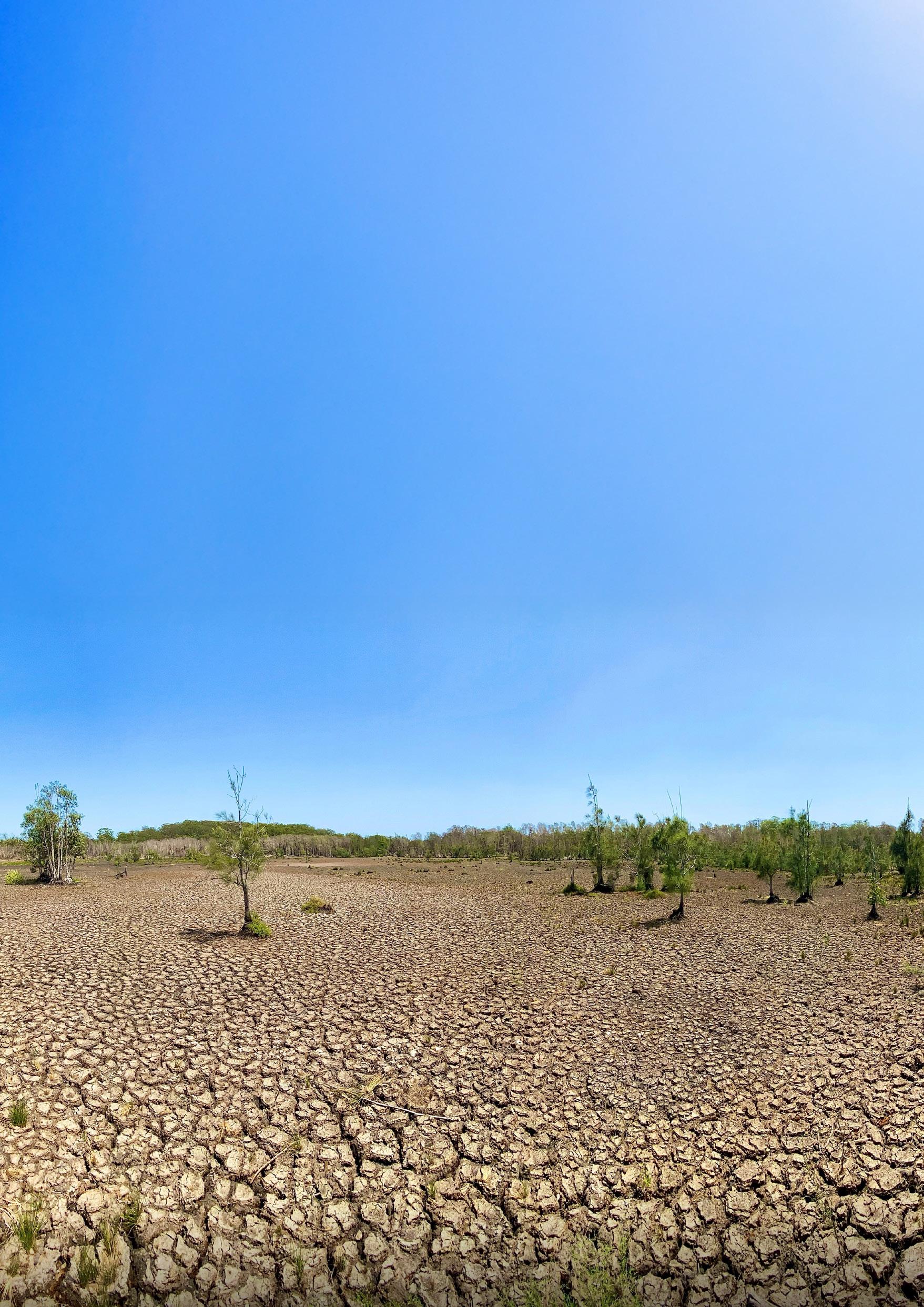
We have several policies, strategies and actions in place to manage climate change. We guide land use and development within coastal zones to manage risks to sea level rise. We assess the assets at risk of climate change impacts. We undertake reviews of floodplain risk. We develop coastal management plans. Climate change projections help us to plan.
We have set a target to achieve net zero greenhouse gas emissions by 2040. We are also aiming to achieve 100% renewable electricity use in our operations by 2040. We will divert 75% of the region’s waste from landfill by 2030.
Community stewardship means the responsibility that local people take to protect their environment. Stewardship is essential for ensuring the health of the local ecosystem. It builds a stronger bond between people and their natural surroundings. A lack of community stewardship harms the environment, local economy, and community sentiment.
• Environmental decline such as pollution, habitat loss, and degradation will affect estuaries. Positive behaviour from the community can help protect estuaries.
• Economic costs from loss of natural resources can impact fishing, tourism and agriculture.
• Health and wellbeing benefits include clean air, water, and spaces for recreation. Poor stewardship risks lowering the mental and physical health of residents.
There are many different programs to help our community connect with our environment. These programs and projects help raise awareness. They get people involved. People feel a sense of shared responsibility for the environment. Education programs explain the importance of the estuaries. People learn how to help protect them. Hands-on activities restore rivers and create better backyard wildlife habitats. The annual Waterway and Catchment Report Card monitors health of estuaries.

Aboriginal peoples have strong cultural connections to our estuaries. Cultural heritage refers to places and physical objects. It includes customs, knowledge, beliefs, language and stories. Cultural heritage shapes identity and links to Country. Cultural heritage and Country form a lived spirituality that is fundamental to wellbeing. It connects Aboriginal peoples across generations. Threats to estuary health, totem species, cultural practices and objects impact Aboriginal peoples. These threats lead to loss of cultural heritage and connection with Country. In turn, that loss leads to reduced health, wellbeing and spirituality.

• Environmental decline. Estuaries can suffer from pollution, habitat loss and degradation. This causes loss of natural cultural resources, cultural values and heritage.
• Tidal inundation. Rising sea levels threaten cultural heritage on the foreshore of estuaries.
• Health and wellbeing. Loss of cultural heritage and connection with Country can cause declining mental and physical health.
• Limited appreciation and understanding of cultural heritage. The general community may not appreciate the importance of Aboriginal cultural heritage. This may limit their desire to protect and appreciate these values.
• Limited involvement. Aboriginal peoples have historical knowledge and perspective about estuaries. They can add significant value to estuary management. Many Aboriginal corporations manage land next to estuaries.
We have strategies and actions to involve Aboriginal peoples. These include the Aboriginal Action Plan and Cultural Plan.
New farming methods can reduce impacts on estuaries. Old methods of land clearing, cropping, cattle grazing and poultry farming can increase runoff and water pollution. The challenge is to balance agricultural productivity with environmental sustainability.
• Soil degradation is when the quality of soil gets worse over time. It is a result of erosion, nutrient loss, pollution and compaction. Soil degradation can lead to increased sediment runoff which impacts estuary water quality.
• Increased runoff can contain harmful substances such as fertilisers, manure, and sediment. These degrade water quality in nearby rivers and estuaries. Algal blooms, poor water clarity and loss of aquatic habitats damage local ecosystems.

We are working with landholders to improve farm practices. Actions have both environmental and production benefits. Community education on sustainable farming methods helps reduce impacts. Projects to repair and protect riverbanks restores the habitat. Monitoring and reporting on estuary water quality provides information on waterway health.
Oyster farming and fishing industries can be impacted by a number of issues including habitat loss, disease outbreaks, pollution and climate change.
• Habitat degradation. Fish habitats like seagrasses and oyster reefs are being damaged by human activities. Artificial barriers can prevent fish migration.
• Diseases in aquaculture. QX disease affects oysters. Human health outbreaks include hepatitis A and Novovirus. Both can threaten the oyster farming industry.
• Pressure on fish stocks. Overfishing can impact on fish populations. Unsustainable fishing methods like bycatch (non-target species) reduces fish stocks. Litter from fishing can add to this problem.
• Pollution. Pollution can damage habitats and affect fish health. Urban stormwater runoff, oil spills, litter and acid sulfate soils impact estuary habitats.
• Climate change. Sealife diseases could increase due to the warming of sea and estuary temperatures. This is a long-term risk to the industry.
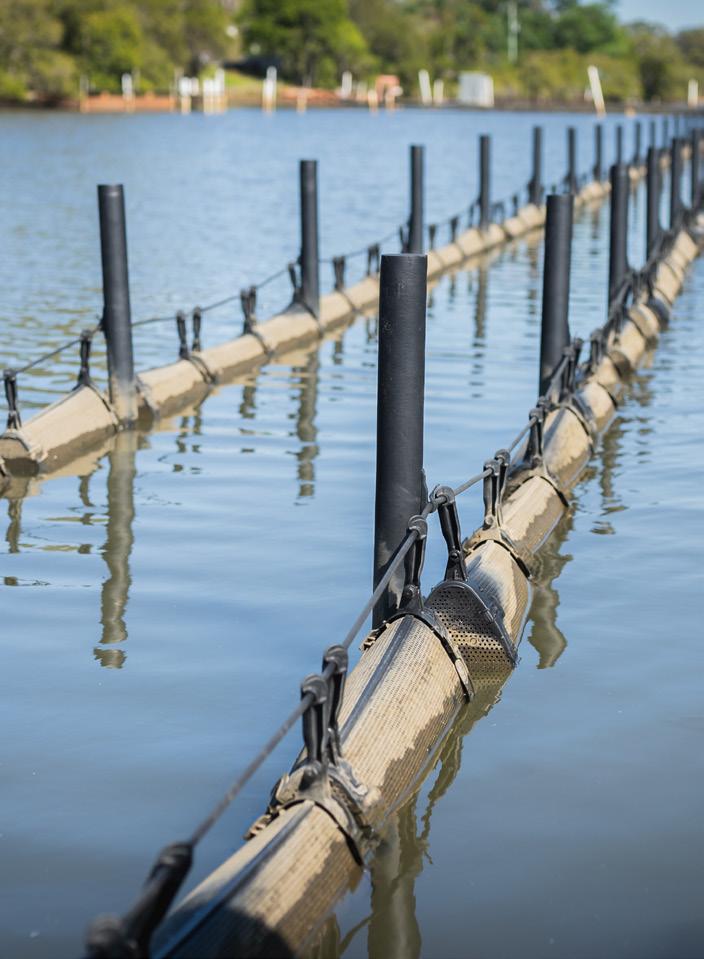
The NSW Department of Primary Industries - Fisheries manages commercial fisheries and aquaculture. Oyster growers work with the Food Authority to manage food safety for oysters. Government agencies and industry groups collaborate to promote sustainability. Fish stocks are protected through removing barriers to fish passage, biosecurity programs and investigations into fish health.
Biodiversity is the different living things in one area called a habitat. Water pollution threatens the biodiversity of our estuaries. The effects of climate change are impacting estuaries. Development, vegetation clearing and erosion are threats to biodiversity. Weeds and pest species also contribute to reduced biodiversity.
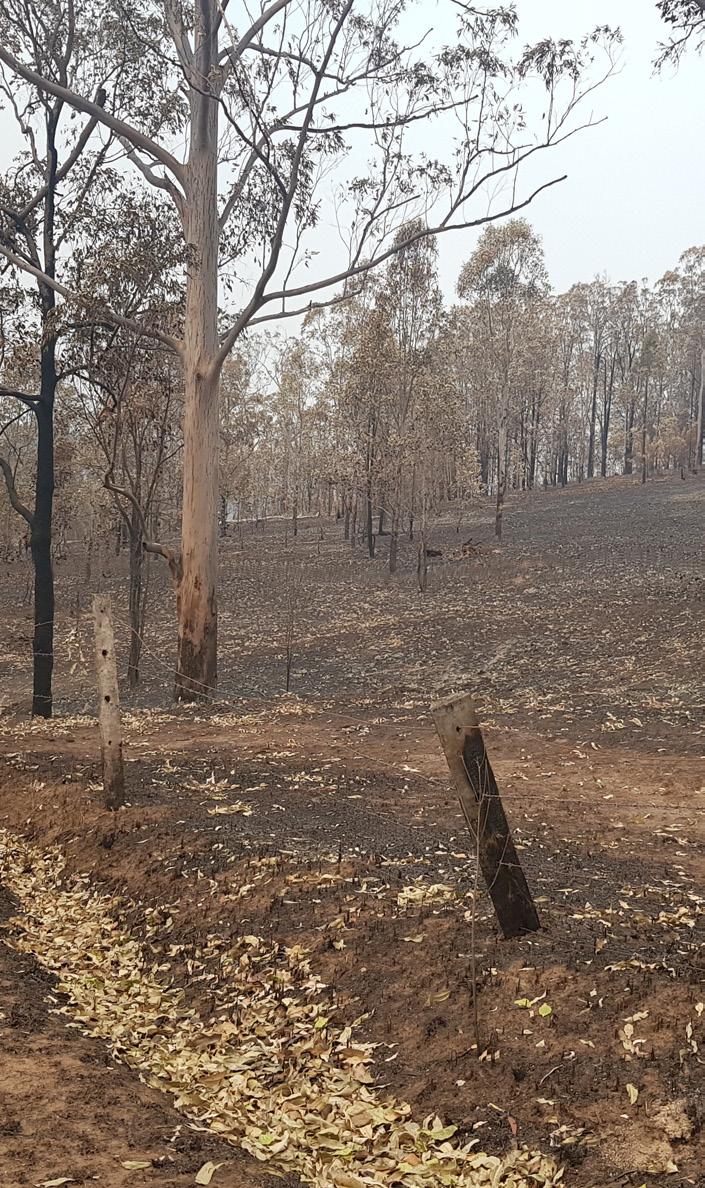
• Water pollution disrupts ecosystems and harms marine life.
• Climate change leads to increased bushfires, floods and sea levels which harm habitats.
• Development and vegetation clearing results in habitat loss and species decline. Foreshore encroachment and erosion can happen. Invasive species can spread.
• Vegetation clearing for livestock grazing on foreshores can increase erosion and cause sedimentation in estuaries.
• Weed and pest species threaten native species by disrupting the food chain.
We have several policies, strategies and actions to help protect biodiversity and habitats. Some projects work to restore and preserve ecosystems. Others work to balance recreation, development and infrastructure with environmental sustainability. Education programs help create sustainable backyards and remove weeds and pest species. We track water quality and plant trees to reduce heat impacts.
Human waste can sometimes enter waterways and impact human health. Pipe blockages can cause overflows that might discharge into estuaries. Poor quality discharge and sewer overflows near waterways can also contaminate estuaries. Private septic systems on land near waterways can leak wastewater runoff into estuaries. Systems can fail if they are not managed according to regulations. Overloading a system can cause wastewater to leak out of the system. Public toilets can contaminate waterways if wastewater leaks from the system into estuaries. Boats that discharge wastewater pollute our estuaries.
• Health impacts include gastrointestinal illness, respiratory infections, eye infections and more.
• Contamination of oysters can impact human health and the oyster farming industry.
The NSW Environmental Protection Agency (EPA) sets standards for treated water quality. Our sewage treatment plants treat wastewater and operate under licences from the EPA. Treated water that meets the standard can return to the environment. We monitor and renew pipes in high risk locations. Exfiltration ponds and use of recycled water reduces discharge going into waterways. Inspections detect illegal connections of stormwater to sewerage systems. Education programs encourage community to prevent blockages of sewerage systems. We also regulate septic systems and concentrate efforts on the highest-risk locations.



There are several different estuary types within the southern estuaries. Black Head Lagoon and Khappinghat Creek naturally open and close with rain levels and tides. Smiths Lake is mechanically opened for flood management in an environmentally sensitive way. Wallis Lake has breakwalls so it is permanently open. It is facing issues with entrance shoaling and delta migration. Myall Lakes, Karuah River, North Arm Cove and Kore Kore Creek enter the ocean via river channels.
• Sea level changes influence entrance opening frequency and duration and increase sediment buildup.
• Saltwater levels can disrupt the balance of freshwater and saltwater habitats.
• Breakwalls in Wallis Lake continue to cause entrance shoaling and migration of the flood tide delta.
We mechanically open Smiths Lake to prevent minor flooding. We undertake navigational dredging in Wallis Lake and the lower Myall River.
Coastal wetlands are important for ecological health. They provide water filtration, flood control, and habitat for wildlife. Land clearing for agriculture and urban development reduce wetlands. Rising sea levels and more frequent storms impact our wetlands.
• Increased flooding and storm damage. Wetlands absorb water to help protect against floods and storms. Without healthy wetlands, coastal areas are more vulnerable to flood damage and erosion.
• Worsening water quality. Wetlands purify water by filtering out pollutants. Without them, water quality can worsen, affecting both the environment and human health.
• Loss of wetland habitats. Farming, construction and draining for land use removes many wetlands.
• Damage to wildlife. As wetlands reduce, animals lose their homes and populations decline.
• Invasive species. Non-native plants and animals harm wetland habitats. They crowd out native species and further degrade the ecosystem.
We protect and restore our wetlands through existing wetland restoration projects. We undertake wetland mapping and studies. We restore oyster reefs and mangrove habitats. We manage pests and weeds.

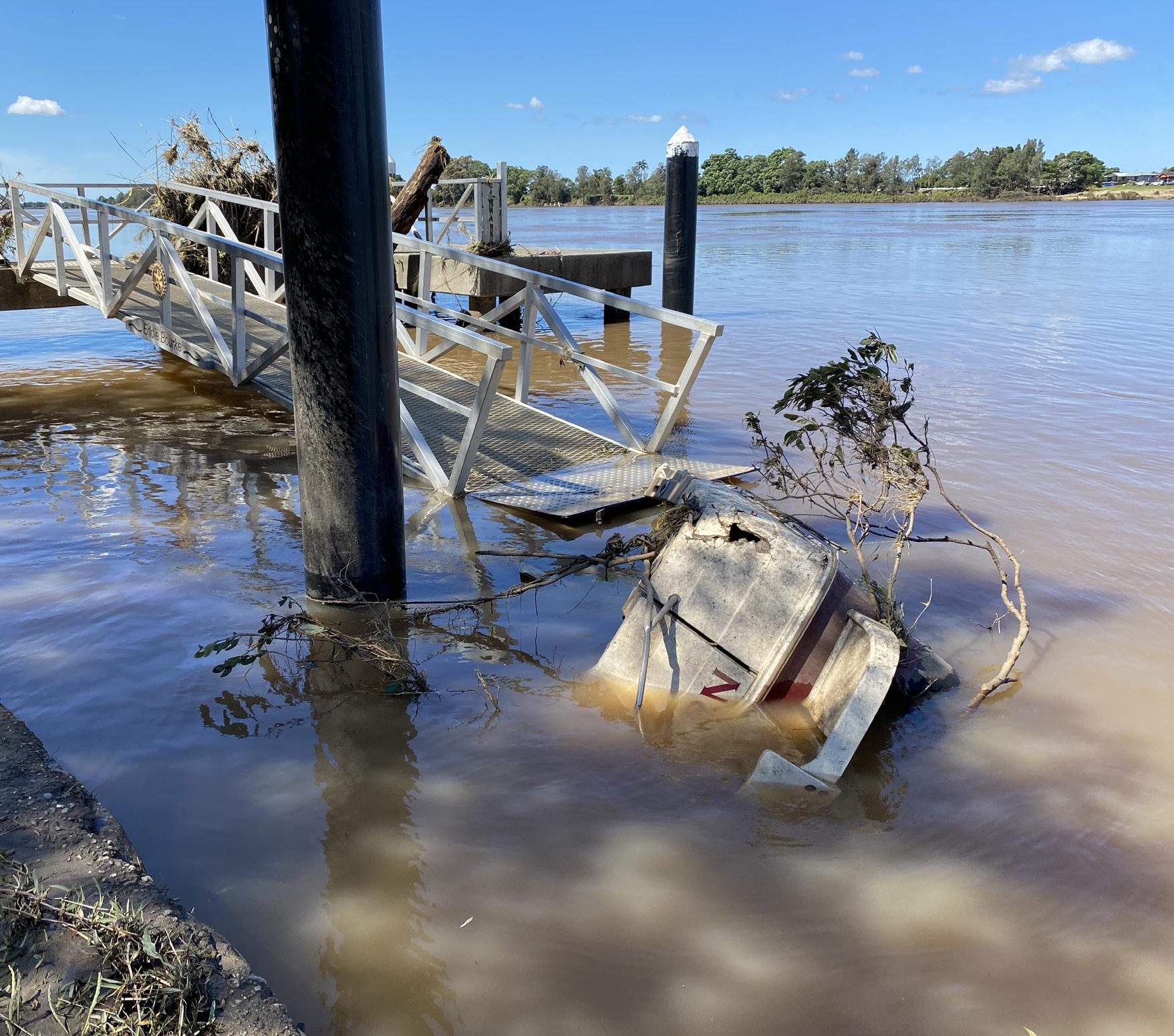
Low-lying areas near foreshores become flooded at different times due to tidal inundation.
Tidal inundation or sunny day flooding, occurs when a high tide floods low-lying areas. This can impact infrastructure such as roads, properties, homes, and businesses. Sewage overflows and contamination of local waterways can occur. This poses public health and flash flooding risks. This will increase over time due to sea level rise.
Floodplain risk management studies and plans can reduce impacts of flooding and inundation. Actions like land use planning and flood mitigation are part of the plans. The plans also support the State Emergency Service’s planning. The climate change adaptation framework manages the risk to our infrastructure assets.
Recreational activities impact our estuaries. Unsustainable fishing practices and vessel strikes impact wildlife. Unrestricted access to foreshore areas from vehicles and pedestrians causes erosion. Overcrowding, congestion, heritage impacts, anti-social behaviour and wildlife interactions are other impacts. They result in deteriorating natural values and reduced amenity.

• Some boats launch through natural vegetation instead of boat ramps. Limited pump out stations can result in pumping of wastewater into the estuaries. Boats can drag along the bottom of shallow estuaries. This harms aquatic habitats. Boats also have a major impact on seagrass meadow loss.
• 4WD vehicles on estuary banks and dry estuary beds cause erosion and damage habitats.
• Unsustainable fishing practices can result in discarded fishing gear. Overfishing harms biodiversity.
• Population growth and increased visitors will cause increased impacts on the estuaries.
The Recreational Boating Infrastructure Plan outlines improvements for boat ramps, repairs and investigations. Other agencies regulate vehicle and boat use, and guides for fishing.
Estuaries are facing pressures from a growing population, urbanisation and climate change. Natural hazards like coastal erosion and tidal inundation also impact our estuaries. We want to balance development with environmental protection. We aim to manage the risks from these hazards.
• Tidal inundation. Rising sea levels threaten the environment and communities surrounding estuaries.
• Urbanisation and population growth. Building more homes, roads and infrastructure can disrupt natural habitats. This makes it harder to manage coastal risks.
• Inconsistent planning. Planning rules can differ across estuaries. This makes it difficult to manage land surrounding estuaries. This inconsistency can lead to poor development decisions and higher risks for communities.
The NSW Government’s framework guides coastal management and helps protect the environment. Statewide maps highlight where we need to protect estuary health and coastal wetlands. These maps guide us about where it is safe to build and how to protect vulnerable areas. The Government is working on a consistent set of rules for land-use and development. This includes updating local planning policies to account for future climate change risks.




Erosion sends large amounts of sediment into waterways which impacts on water clarity. Erosion and sedimentation in our estuaries are ongoing issues. Unsealed roads, construction, agriculture, forestry, and even boat wash all cause sedimentation.
• Sedimentation disrupts aquatic life and can decrease plant life such as seagrass.
• Erosion can change the physical shape of the estuaries, damaging shorelines and riverbanks.
• Removal of natural vegetation increases erosion because vegetation protects the shorelines.
• Climate change will cause more intense rainfall and inundation of foreshore areas. It will worsen the situation.
Regulations control erosion and sedimentation on construction sites. Better management of forestry and agricultural operations is in place. Strategies to reduce the impact of boat wash on riverbanks are being implemented.
Development causes increased stormwater runoff. This carries harmful pollutants into waterways including litter, nutrients, sediments, bacteria and chemicals.
• Pollution. Polluted waterways harm plants and animals living in these water bodies.
• Damage to seagrass and aquatic life. Increased nutrients promote algal growth. This reduces the amount of light available for seagrass and other aquatic plants to grow. Increased algal growth can also kill fish and impact oyster health.
• Erosion and sediment build-up. Sediment in waterways can bury important habitats. Seagrass needs clear water to thrive.
• Threats from climate change. More intense rainfall and runoff overwhelms stormwater systems. This leads to increased flooding and worsens water pollution in some areas.
We use rain gardens and create urban wetlands. These help filter runoff from urban development and stormwater. We maintain litter traps to remove pollution before it reaches our waterways.








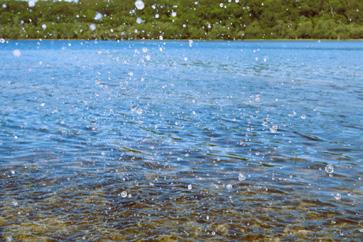




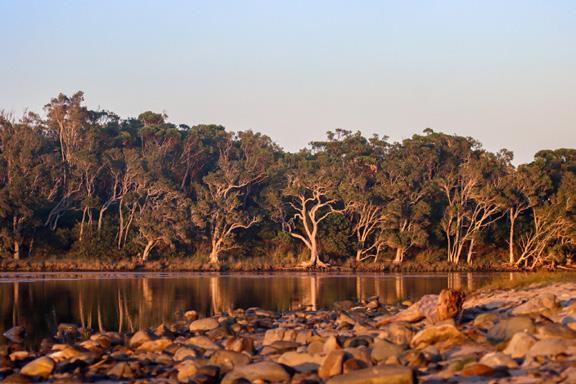



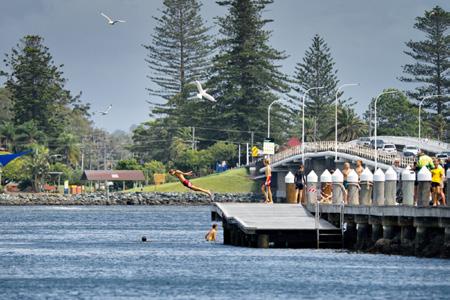
Thank you for participating in
Once you’ve reviewed the information, scan the QR code or head online to complete the online survey. Feedback closes 4.30pm Thursday 22 May 2025. midcoast.nsw.gov.au/oursouthernestuaries